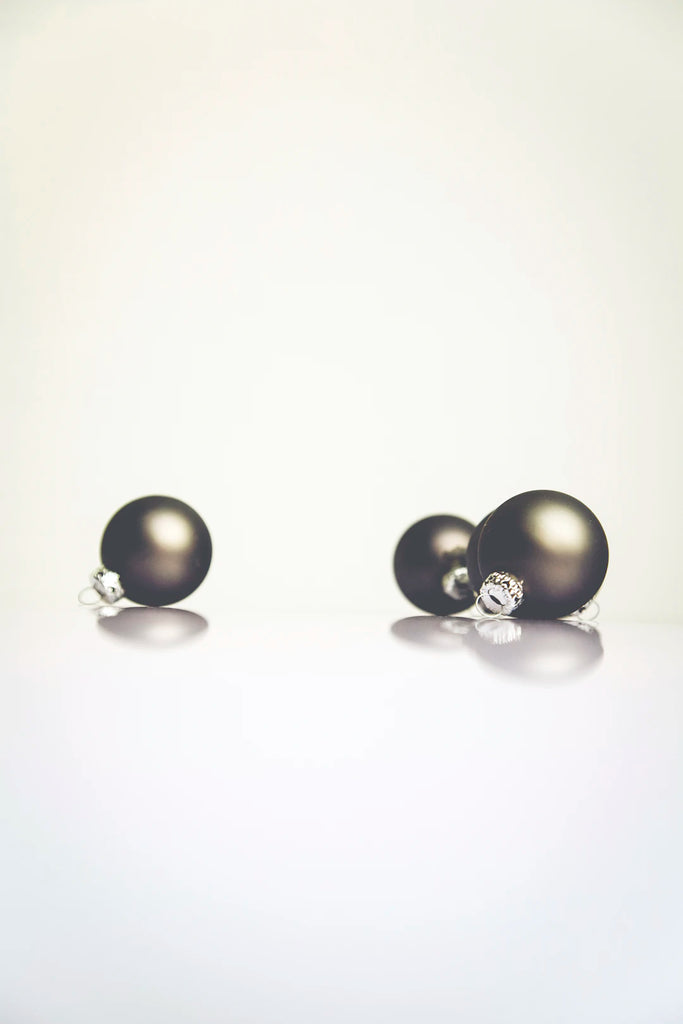Tahitian Pearls vs. Other Pearls: Discover the Differences

Frequently Asked Questions
1. What are Tahitian pearls known for?
2. Where do Tahitian pearls originate?
3. How do Tahitian pearls compare to Akoya and Freshwater pearls?
4. What are some essential care tips for Tahitian pearls?
5. What should I consider when purchasing Tahitian pearls?
When it comes to luxurious jewelry, pearls are an enduring favorite around the world. Among the plethora of varieties that exist, tahitian pearls stand out due to their unique beauty and richness. However, there are numerous types of pearls available, each with its own distinct features and charm. In this guide, we will delve into what sets tahitian pearls apart from other types of pearls, explaining their unique characteristics and what makes them a must-have addition to any jewelry collection.
The Origins of Tahitian Pearls
Tahitian pearls, often referred to as "black pearls," originate primarily from the Pinctada margaritifera oyster, which is found in the warm lagoons and waters of French Polynesia. This exotic location plays an essential role in the allure of tahitian pearls, as the rich ecosystem and varying water temperatures contribute to their unique luster and color. Unlike pearls cultivated in other regions, tahitian pearls possess a remarkable array of colors, which range from deep black to shades of gray, green, blue, and even peacock hues.
Comparing Tahitian Pearls to Other Pearls
To truly appreciate tahitian pearls, it is important to consider how they compare with other popular types of pearls such as Akoya pearls, freshwater pearls, and South Sea pearls. Here is a brief overview of each of these pearls and their distinguishing characteristics:
Akoya Pearls
Akoya pearls originate primarily from Japan and China. They are typically smaller in size, ranging from 6 to 9 mm, and are prized for their high luster and smooth surface. Akoya pearls usually come in a white or cream color, with pink or silver overtones. While they showcase incredible shine and beauty, they often lack the deep colors and larger sizes that tahitian pearls can provide.
Freshwater Pearls
Freshwater pearls are cultivated in freshwater lakes and rivers, primarily in China. They tend to come in a wide variety of shapes and colors, often having a more irregular shape than tahitian pearls. The size of freshwater pearls also varies considerably, ranging from 2 mm to 15 mm. While they are often more affordable, they generally do not possess the same luster and depth of color associated with tahitian pearls.
South Sea Pearls
South Sea pearls are known for being among the largest and rarest pearls. They are typically produced by the Pinctada maxima oyster found in the South Sea waters of Australia, Indonesia, and the Philippines. These pearls are often characterized by their creamy white to gold tones and can reach sizes of up to 20 mm or more. While South Sea pearls are valued for their size and luster, tahitian pearls offer a broader spectrum of colors that are harder to find elsewhere.
Distinctive Features of Tahitian Pearls
Now that we understand the differences between tahitian pearls and other types, let’s explore some of their distinctive features that make them such a coveted choice:
Color Range
One of the most striking characteristics of tahitian pearls is their incredible color range. While black pearls are their signature, they can be found in a myriad of shades including:
- Dark gray
- Pewter
- Green
- Blue
- Peacock
This unique palette is largely influenced by the environment in which they are cultivated, which varies significantly in the coral reefs and lagoons of French Polynesia.
Size and Shape
Tahitian pearls usually range from 8 mm to 18 mm, with some exceptional specimens exceeding 20 mm in size. They are also known for their larger, semi-round to baroque shapes, offering a more casual elegance that can complement a variety of styles. This diverse shape range allows them to be versatile pieces, pairing well with both formal and casual outfits.
Surface Quality
The surface of tahitian pearls is often more textured, featuring natural blemishes that add character. The slight variations in surface quality help distinguish tahitian pearls from other types, especially when it comes to providing a unique appeal that reflects both individuality and quality.
The Cultivation Process of Tahitian Pearls
The cultivation process for tahitian pearls is both labor-intensive and time-consuming. Farmers spend years nurturing oysters and monitoring their growth to ensure that the pearls develop the desired characteristics. Here’s a brief overview of the process:
- Seeding: The first step is to carefully implant a nucleus into the oyster, which kickstarts the luster-building process.
- Environment: Tahitian pearls thrive best in pristine waters, making the environmental conditions one of the most critical factors in their development.
- Harvesting: Farmers will typically wait 2 to 3 years before they can harvest the pearls, ensuring that they have matured fully.
This lengthy process contributes to their exclusivity, making tahitian pearls a luxury choice in pearl jewelry.
How to Care for Your Tahitian Pearls
Owning tahitian pearls is a treasure, and proper care is crucial to maintaining their beauty. Here are some essential tips:
- Storage: Store tahitian pearls in a soft pouch or a pearl-specific case to prevent scratching and damage.
- Cleaning: Use a soft, damp cloth to wipe away dust and oils. Avoid jewelry cleaners that can be too harsh.
- Wearing: Wear your pearls regularly, as their natural oils can help maintain their luster.
Styling Tahitian Pearls
Tahitian pearls are magnificent in their own right, but they can also make for stunning accessories when styled correctly. Here are some ideas on how you can wear tahitian pearls effectively:
Formal Events
For formal occasions, consider pairing tahitian pearl earrings or a classic necklace with elegant evening wear. The unique colors can enhance your outfit while adding a touch of sophistication.
Everyday Wear
Tahitian pearl bracelets can complement casual attire while lending a bit of glam to your daily look. Consider wearing them with denim or cotton blouses for a chic but effortless vibe.
Layering
Mix and match tahitian pearls with other types of pearls for an eclectic yet curated look. This layering technique can showcase the beauty of tahitian pearls while also adding artistic flair.
The Value of Tahitian Pearls
Due to their unique attributes and the laborious cultivation process, tahitian pearls frequently come with a higher price tag compared to other pearls. However, many collectors and enthusiasts consider them worth the investment due to their work of art quality and lifelong durability.
Factors Influencing Value
There are several factors that can influence the value of tahitian pearls, including:
- Color: The more unique and vibrant the color, the higher the value.
- Size: Larger pearls generally command higher pricing.
- Surface Quality: Pearls with fewer blemishes are typically more valuable.
Getting Your Own Tahitian Pearls
Ready to add tahitian pearls to your jewelry collection? Finding high-quality tahitian pearls necessitates an informed approach:
- Research Reputable Sources: Seek out vendors with good reviews and a solid reputation for selling authentic pearls.
- Request Certification: Authentic tahitian pearls often come with certification of authenticity, offering assurance of quality.
- Ask about Care Instructions: A trusted seller will provide care guidelines to help you maintain the beauty of your pearls.
Your Tahitian Pearl Adventure Awaits!
The world of pearls is as vast as it is beautiful, but tahitian pearls hold a special place in the hearts of many due to their unique colors, substantial sizes, and exquisite luster. By understanding their origins, characteristics, and proper care methods, you're well on your way to appreciate these magnificent gems. So whether you’re adding them to your collection or seeking a stunning gift for someone special, tahitian pearls are sure to make a lasting impression!

Dejar un comentario